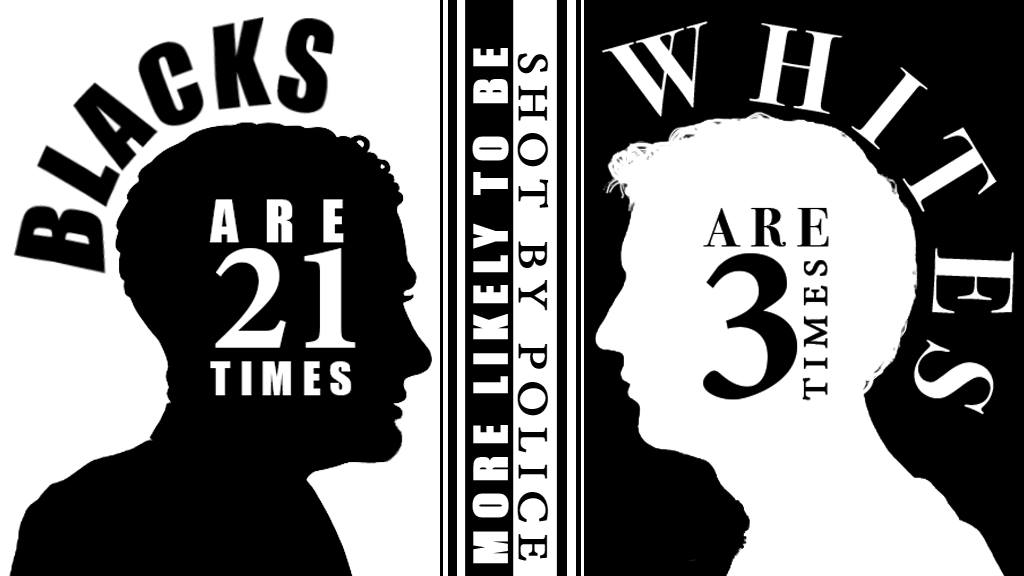Let's start out with the most basic fact: statistics are frequently more bullshit than substance.
This does not mean the numbers are necessarily false, however; rather, especially when we're discussing national issues with massive amounts of variables, the numbers become localized or are hand-selected to promote a certain cause.
With the recent surge in the Black Lives Matter movement and a much higher scrutiny on the police's interactions with minorities, the numbers on police shootings are a perfect case study. When looking at statistics cited by the conservative end, you are likely to have results that disprove the idea that racism even exists, and that whites are just as much victims as blacks. Take Bill O'Reilly's suggestion that the numbers prove whites are three times more likely to be killed by police than blacks. Meanwhile, more left-wing outlets such as CNN writer Nicholas Kristof are saying that blacks are 21 times more likely to be killed by police than whites.
The fact of the matter is there's probably a grain of truth to what both of them are saying — grain as in the equivalent of a couple granules of sand out of an expansive beach. The best record we currently have of police-related deaths is from the United States Department of Justice, which comes off as an official source until you take into account that no local precinct is required to provide data for the survey. Also, the data itself hasn't been updated since 2009, which begs the question: where are these stats coming from? The 21-to-1 ratio Kristof mentioned comes from a Propublica report that aggregated data from FBI documents, while O'Reilly's statistic, ironically, comes from the same dataset. Obviously it would be pretty hypocritical for the same study to say both of these things, yet depending on how you interpret the data, both conclusions can be reached.
The 21-to-1 ratio takes into account population ratio, meaning that since the black population is much smaller than the white population in America, factoring in the number of killings to population density shows an outstanding difference in numbers. Meanwhile, O'Reilly's factor comes from the hard numbers, meaning that on paper, 44 percent of all shooting victims by police were white, which in turn is a higher number than blacks shot, and thus proves that whites are far more likely to shot by police than blacks.
The Propublica report itself announces in the fine print that the FBI records are faulty at best, and almost completely devoid of value at worst.
Again, this is all more or less bullshit. The Propublica report itself announces in the fine print that the FBI records are faulty at best, and almost completely devoid of value at worst. This is because, much like the Department of Justice reports, the FBI records come from precincts that willfully handed over their records under no obligation to do so. Also, many of the cities which handed over documents to the FBI, such as Los Angeles, have disproportionate minority populations to the country as a whole. While 79.96 percent of the United States is white, 20 percent of Los Angeles is white, and a whopping 49 percent of the population is Hispanic, compared to 15.1 percent nationally. The black population in Los Angeles is more or less representative of the national stat (9 percent to 12.85 percent, respectively).
When surveying a population that is skewed from the national demographic mix, you are not making an accurate statement about the nation, but rather solely about the cities surveyed. Given that, according to Propublica, Florida precincts haven't filed a record since 1997 and New York City since 2007, it becomes apparent that it is a work-with-what-you've-got-scenario. But there arises a problem: you cannot treat such a serious subject with the the same kind of lackluster data collections as you would find with secret shoppers. It is not representative, and likely only obscures some of the real problems that are happening.
It is entirely likely, even probable, that black youths are subject to more intense scrutiny and assault from the police than any other rate. But as a journalistic outlet, you have to prove that, and can not just claim it based on anecdotal evidence. In this sense, both O'Reilly and Kristof are somehow both correct in their statements. The abject silliness should shine through there; two statistics on the same subject that say the exact opposite of each other are both technically right, solely for the reason that the data collections are trash.
It boils down to the fact that statistics are the lazy journalist's proverbial wet dream; they ring with official tone and scream hard data, yet are often based on trivialities.








